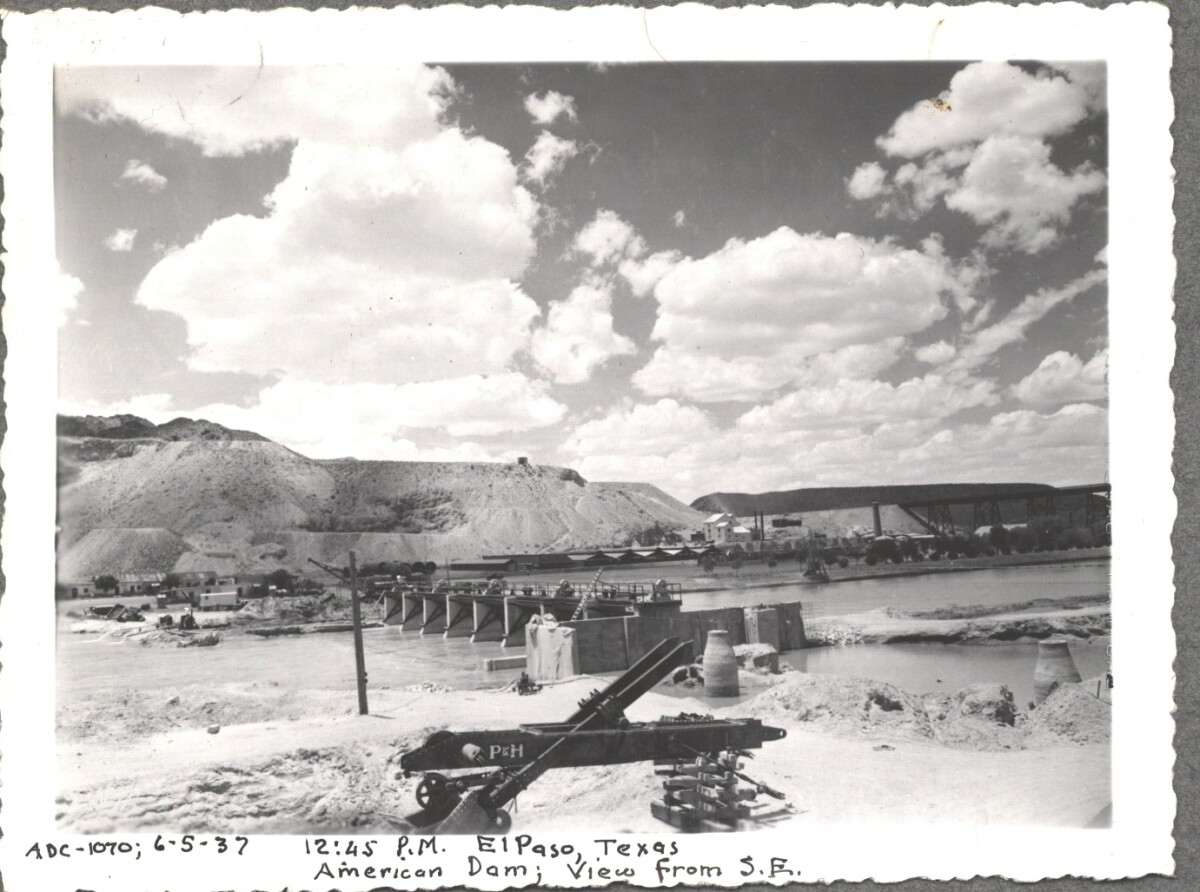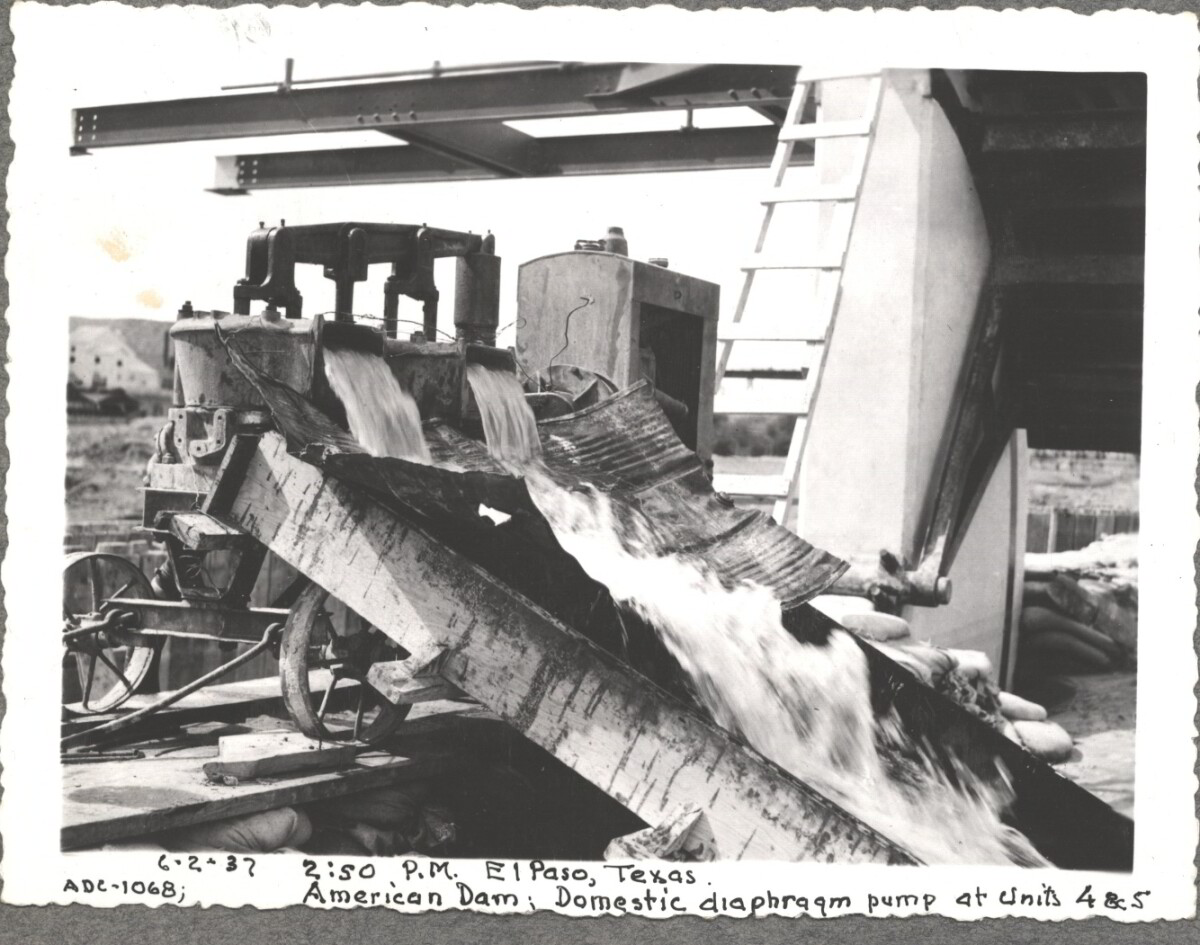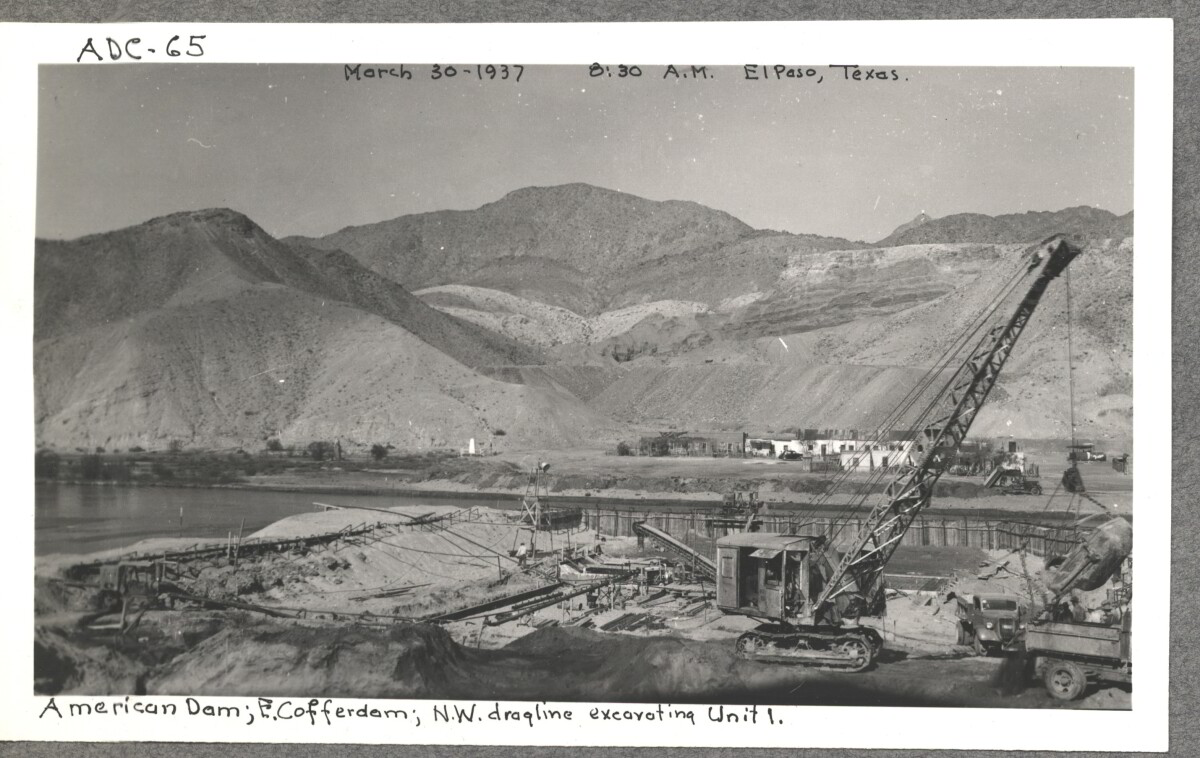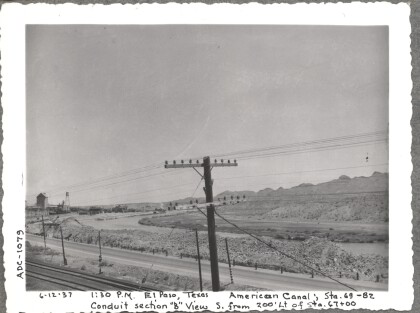Reportar esta entrada
Más sobre la misma comunidad-colección
Construction of American Canal 1937
Note: 6-5-37, 3:00pm, El Paso Texas; American Canal; View S.; ...
Construction of American Canal 1937
Note says: 6-5-37, 3:00pm, El Paso Texas; American Canal; sta. ...
Construction of American Dam, 1937
Note: 6-24-37, 2:00pm, El Paso, Texas. American Dam; Units 4 and ...
Construction of American Canal, 1937
Note: 6-26-37, 10:00am, El Paso, Texas; American Canal, sta. ...
Construction of American Canal, 1937
Note: 6-26-37, 10:15am, El Paso, Texas. American Canal; sta. ...
Construction of American Canal, 1937
Note: 6-26-37, 10:00am, El Paso, Texas. American Canal; Sta. ...
Construction of American Dam, 1937
Note: 6-26-37, 12:15 pm, El Paso, Texas; American Dam; View from ...
Internatinal Boundary & Water Commission
American Canal; Excavatina inlet; El Paso, Texas March 20, 1937 ...
Internatinal Boundary & Water Commission
American Dam; view from S. W. El Paso, Texas March 20, 1937 at ...
Internatinal Boundary & Water Commission - El Paso, Texas
American Dam; view from hill on west side, at boundary line. El ...








































Comentarios
Hacer un comentario